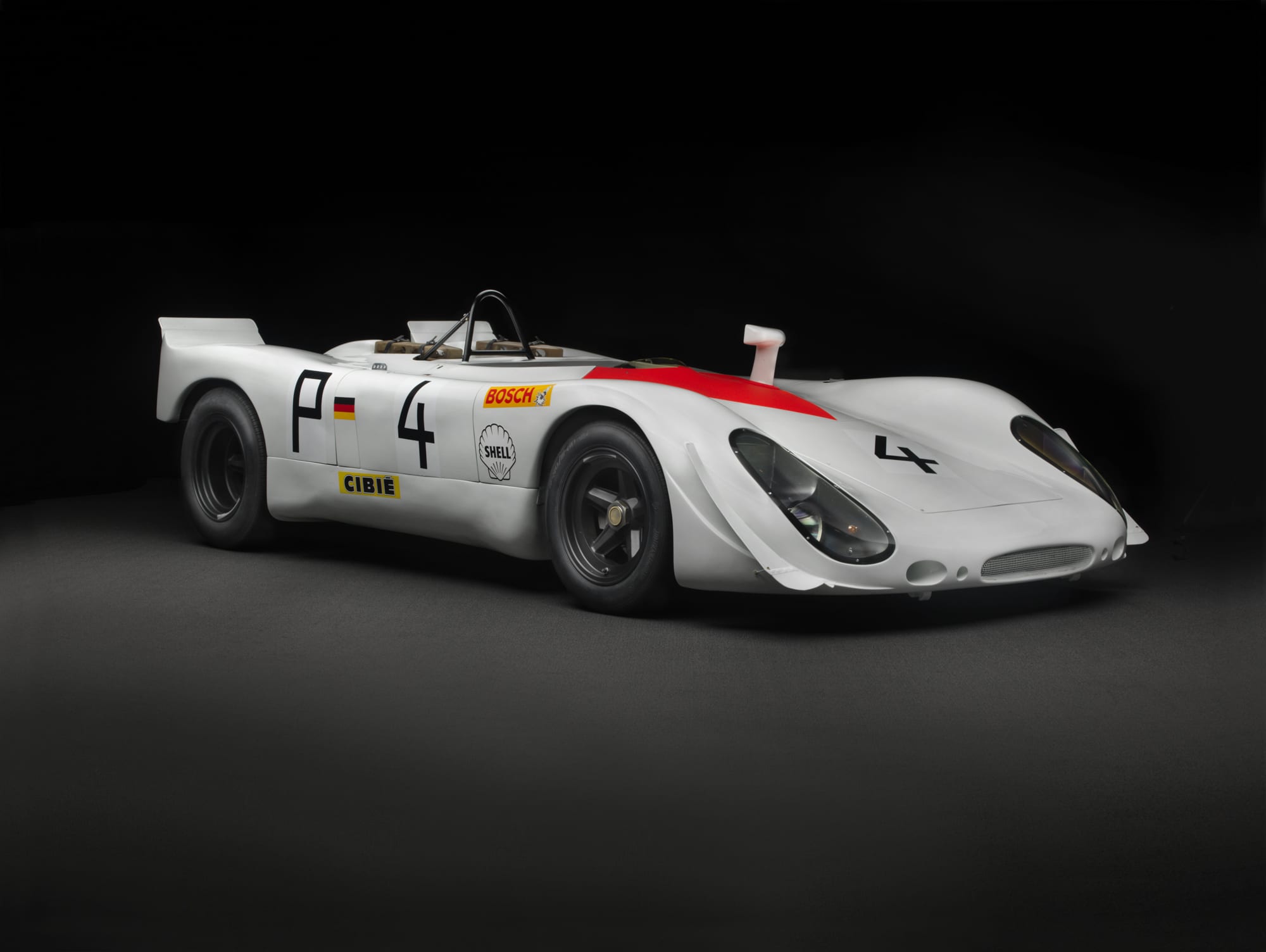Porsche 908 K Flunder Spyder (1969 – 1975)
Premiere: June 1, 1969 Nürburgring 1000 km / The Engine: Flat-eight air-cooled engine, mounted midship, twin overhead camshafts, fuel-injected, 2997 cc, 350 hp at 8400 rpm
A beautiful 908LH ‘Langheck’ (‘long-tailed’) version of the 908/02 also was developed for exceptionally high speeds at Le Mans, Spa, Monza and Daytona. And for 1969 Porsche developed an ultra-lightweight open-cockpit Spyder version – the Porsche 908.02 – with two body styles, a curvy “Coke bottle” shape and an aerodynamic wedge shape nicknamed the ‘Flunder’ (flat fish).
The 908/02 K Spyder and 908 K Flunder Spyder were basically the same cars with slightly different bodyworks. If you look at the non-Flunder Spyder, you see that the body drops after the front wheel arch and rises again before the rear wheel arch. In the Flunder version, this concavity doesn’t exist. The difference between the two versions was mainly visual, no difference in racing use. The first competition the Flunder was entered, was the Nürburgring 1000 km on June 1, 1969. Rolf Stommelen and Hans Herrmann drove the #4 908/02 K Flunder to second place behind a 908/02 K non-Flunder Spyder of Jo Siffert/Brian Redman.
While the non-Flunder 908 Spyders were built with chassis numbers beginning with 908/02-xxx, only a few 908 Flunder Spyders had the 908/02 chassis and the rest were converted from first generation 908/01s with chassis numbers 908-xxx (for example cars that were born as 908 Coupes). That is also the reason the headline of this article doesn’t include “/01” or “/02” as the Flunder Spyders were built with both chassis.
At the 1969 Watkins Glen 6 hour race, the 908/02 K Flunder Spyder driven by Jo Siffert/Brian Redman was the winning car. It was followed by two 908/02 K non-Flunders making it another great finish among countless Porsche triumphs of the Ferdinand Piëch era.
The versions of Porsche 908 were successful around the world and a 908 K Flunder Spyder of Gerhard Koch/Hans-Dieter Dechent scored 3rd at the Kyalami 9 hour race in South Africa on November 8, 1969.
All the five 908/01 LH-69 Coupés (chassis 908-022…026) that were built for the 1969 Daytona 24 hours and used in a few other races, were rebuilt as 908 Spyders and sold to private drivers. They used the chassis from 908/01 and the body panels from the 908/02 Flunder Spyders (both K and LH).
At the Sebring 12h race on March 21, 1970, actor and car enthusiast Steve McQueen teamed up with Peter Revson to drive a 908 K Flunder Spyder (chassis 908-022) and well they did. As McQueen had broken his foot at the dirt bike race not long before the Sebring event, his foot was in casting. To make McQueen’s dream work, the team had to modify the foot room in the car for Steve to be able to drive the car. McQueen raced fighting the pain in his foot. Revson naturally was faster of the two, averagely 8 seconds per lap, and did the lion’s share of the 12 hour driving. Finally, their 3-litre Porsche finished just 22 seconds behind the winning 5-litre Ferrari 512 S.
On April 19, 1970, a 500 km race was held at Zolder race track and the second place was taken by Helmut Leuze/Peter Hoffmann in a 908/02 K Flunder Spyder.
Steve McQueen had an idea to make The Le Mans film and so he signed his 908 up for the 1970 Le Mans. The car was equipped with three cameras, one in front and two at the back. The car was driven by Herbert Linge and Jonathan Williams. They had to make extra pit stops for changing the film rolls, but still managed to cover 282 laps which was not bad compared to the winner’s 343 laps. 1970 was the year Porsche took overall Le Mans victory for the first time (with the 917).
On October 11, 1970 a 1000 km race was held in Austria at Zeltweg and the 3rd place was taken by a 908/02 K Flunder Spyder of Gérard Larrousse/Rudi Lins.
A Visual History & Details


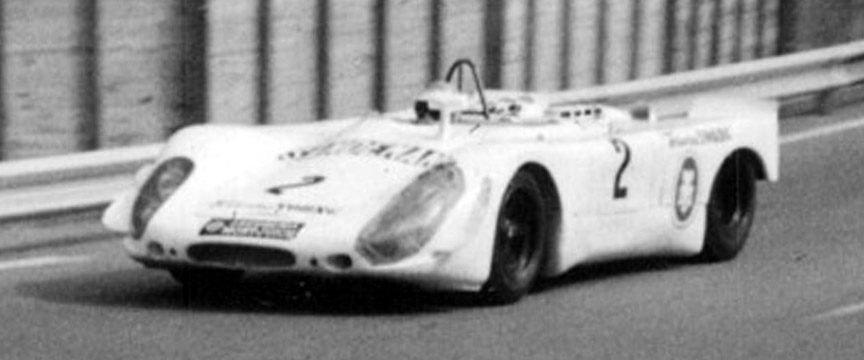


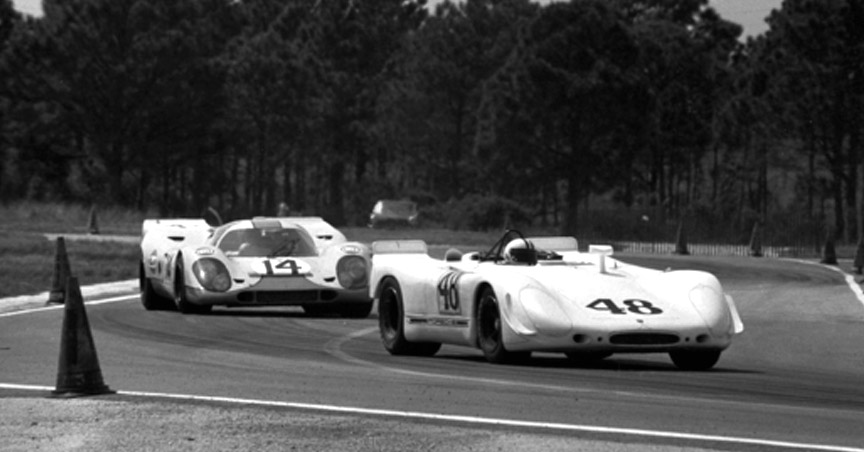
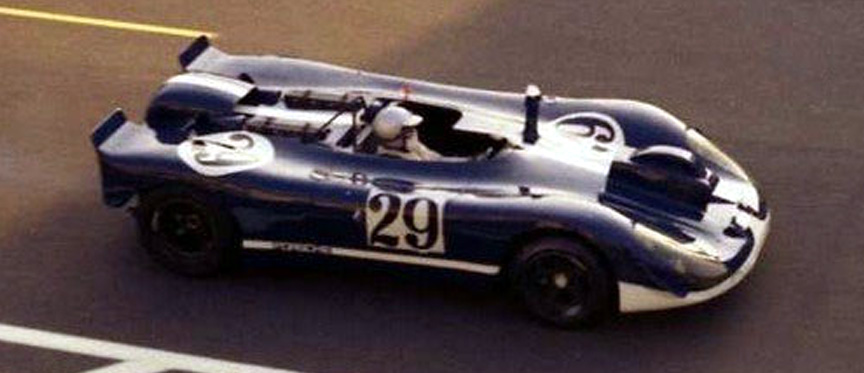
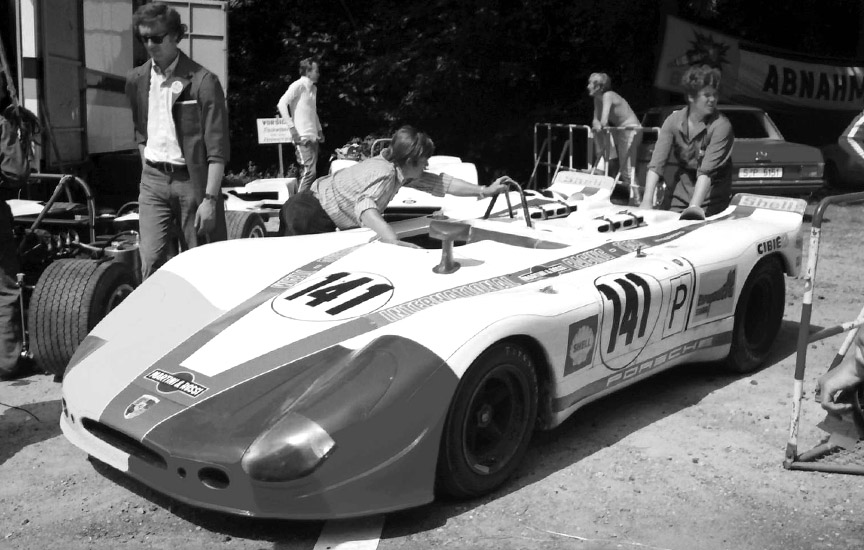
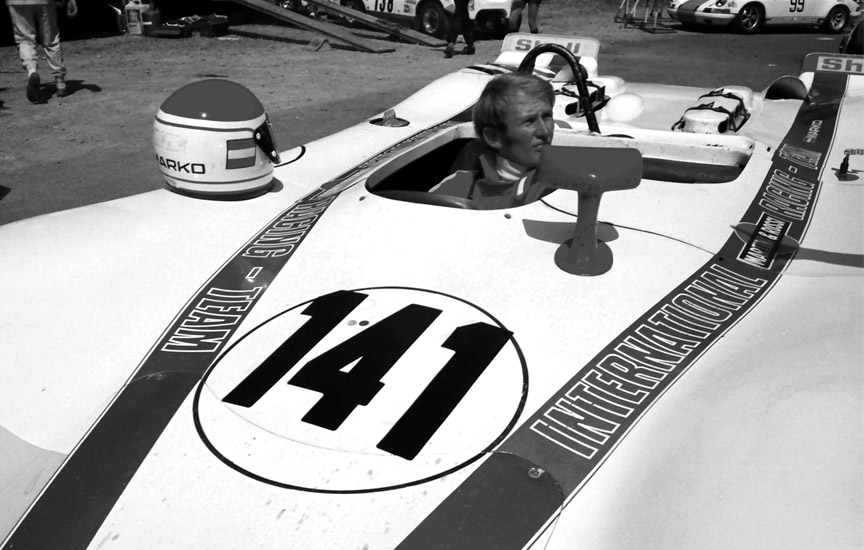
The Sebring Race Film
There is actually some great video we found of the the Sebring 12h race that we have included below. Please note that the video is broken out into several parts.
Racing Results
Racing Basics
- Racing years: 1969-1975
- Number of events: 68 (including 4 races where did not start and 4 official tests)
- Total entries: 95 (contains 59 finishes and 23 retirements, finishing ratio: 71%)
- Most frequent drivers: Helmut Leuze (15), André Wicky (13), Gérard Larrousse (8), Max Cohen-Olivar (7), Hans-Dieter Weigel (6), Claude Ballot-Léna (5), Guillermo Ortega (5), Christian Poirot (5), Rudi Lins (5), Philippe Carron (4), Helmut Marko (4), Guy Chasseuil (4), Dennis Aase (4), Gerhard Koch (4),
- Most frequent chassis: 908/02-016 (22), 908/02-010 (17), 908-022 (12), 908/02-009 (10), 908-026 (6), 908/02-008 (6), 908/02-022 (5), 908/02-018 (5), 908/02-017 (4), 908-023 (2), 908-025 (1)
- Most frequent tracks: Le Mans (23), Nürburgring (13), Watkins Glen (7), Montlhéry (6), Zolder (5), Brands Hatch (4), Hockenheim (4), Spa (3), Kyalami (3), Norisring (3), Magny-Cours (2)
- Most frequent countries: F (33), D (24), USA (13), B (8), I (4), GB (4), ZA (3), CDN (2), RA (1), NL (1), E (1), ANG (1)
Key Racing Achievements
- Wins: 6
- Additional class wins: 4
- Second place finishes: 5
- Third place finishes: 3
- Races finished on podium: 14
- Best result (count): 1st (6x)
- Pole positions: 4


